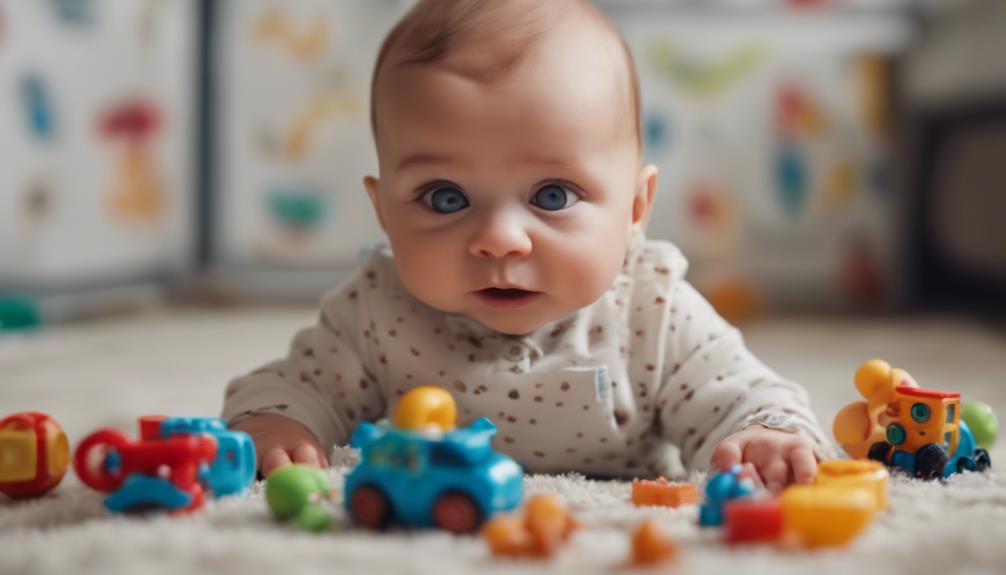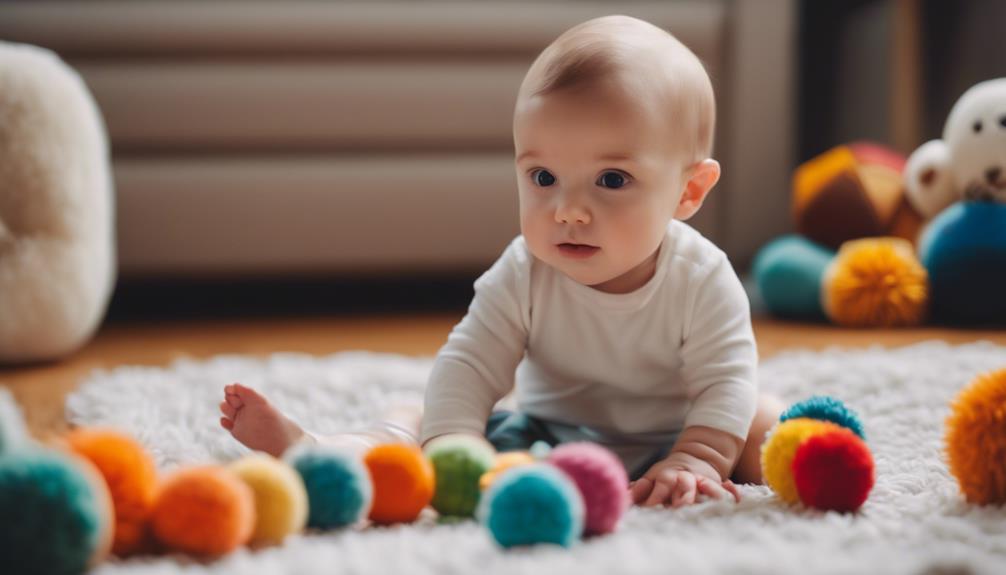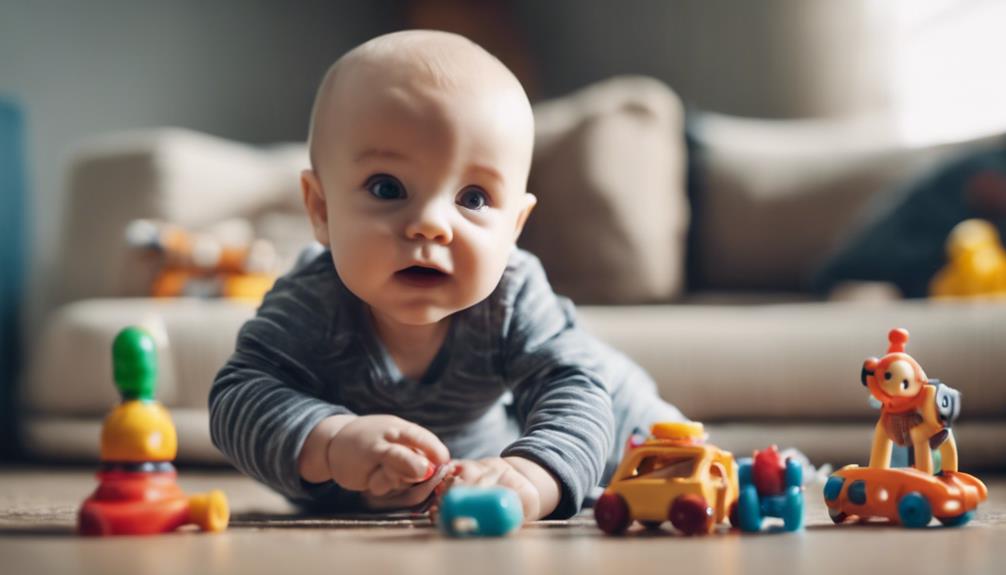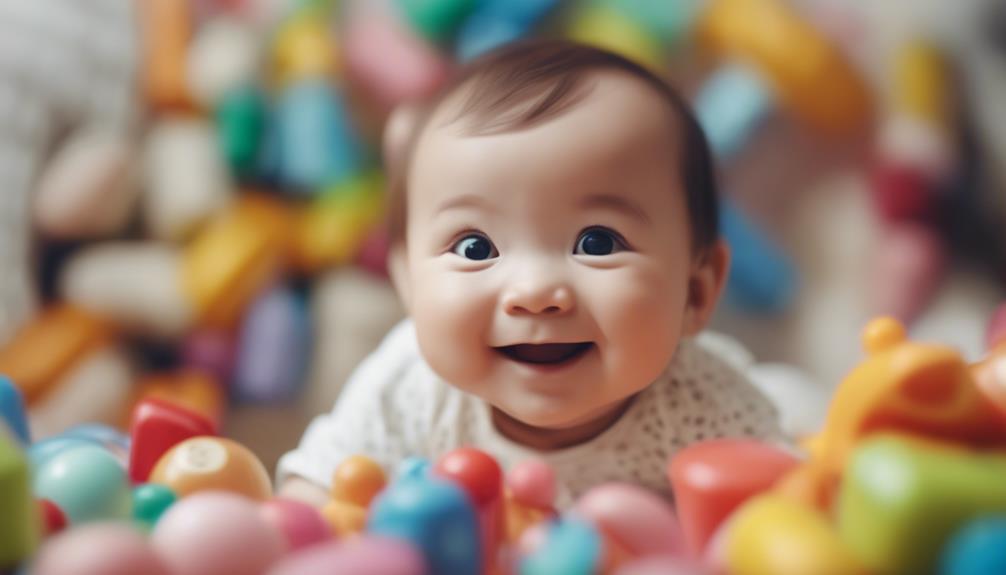To determine if your baby is intelligent, observe key indicators such as good communication skills, emotional intelligence, and reaching developmental milestones early. Smart babies exhibit curiosity, enjoy exploration, and possess strong problem-solving skills. They take pleasure in playing with innovative toys, handle challenges with ease, and display impressive memory retention. Monitor their focus, language progression, and how they approach tasks. By noting these characteristics, you can gain a better understanding of your baby’s intelligence. Continue to pay close attention to these signs, and you will discover more about your baby’s cognitive abilities.
Key Takeaways
- Strong communication skills and early language development.
- Curiosity and eagerness to explore surroundings.
- Problem-solving abilities and innovative play.
- Exceptional memory retention and detailed recall.
- Focus, engagement in tasks, and interest in books.
Communication Skills
To determine if your baby is smart, observe their early communication skills closely. Notice how they vocalize, form sentences, and engage in conversations beyond what's typical for their age. If your little one shows interest in learning new vocabulary, follows verbal directions well, and displays a good understanding of instructions, these are all positive signs of advanced communication skills.
Additionally, if your baby demonstrates early sentence formation and exhibits curiosity in books, it indicates a strong foundation for communication development.
Encouraging your baby to continue exploring language through books, conversations, and everyday interactions can further enhance their communication skills. Engage in interactive activities that promote language learning and provide opportunities for your baby to express themselves.
Emotional Intelligence
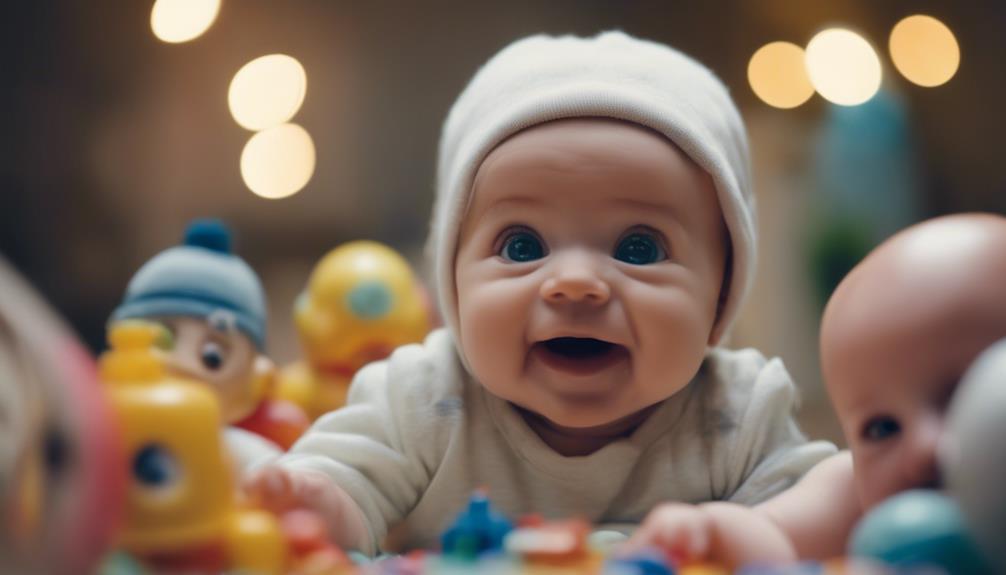
To gauge your baby's emotional intelligence, pay attention to their ability to recognize emotions accurately, such as joy, sadness, or frustration. Smart babies often display empathy and understanding towards others, showing a deep connection to different feelings and reactions.
Encouraging your baby to manage their emotions effectively from an early age can help nurture their emotional intelligence, laying a strong foundation for their cognitive and social development.
Recognizing Emotions Accurately
Recognizing emotions accurately is a key indicator of emotional intelligence in babies, reflecting their ability to connect and empathize with others. Babies with strong emotional intelligence often exhibit deep emotional bonds, meaningful interactions, and a heightened sensitivity to emotions. To better understand how your baby recognizes emotions, consider the following aspects:
| Key Aspect | Description | Signs to Look For |
|---|---|---|
| Emotional Awareness | Ability to identify and understand one's own emotions and those of others. | Noticing changes in facial expressions, responding to different emotions. |
| Recognition of Emotions | Capacity to identify and label various emotions accurately. | Pointing at sad faces, trying to comfort someone who is upset. |
| Connection with Others | Establishing and maintaining strong emotional bonds with caregivers, peers, and even pets. | Seeking comfort from caregivers, showing excitement when seeing loved ones. |
Empathy and Understanding
Understanding and empathy are early indicators of emotional intelligence in gifted babies, demonstrating their ability to connect with and respond to the emotions of others. Gifted babies show a remarkable capacity for empathy, displaying a deep understanding of emotional cues and forming strong bonds with caregivers and peers. By recognizing and appropriately responding to emotions, these babies showcase a high level of emotional intelligence. Their ability to show compassion towards others' feelings and needs sets them apart when it comes to emotional awareness.
As a parent or caregiver, you can nurture this empathy and understanding in your baby by providing a supportive and loving environment. Encourage interactions with others, model empathy in your own actions, and validate your baby's emotions. By fostering a sense of connection and empathy early on, you're helping your baby develop essential skills for building relationships and understanding the world around them.
Managing Emotions Effectively
Smart babies demonstrate their emotional intelligence by effectively managing their emotions and forming strong connections with others. As a parent, you play an essential role in nurturing your baby's emotional maturity and development. By recognizing and supporting your baby's emotional intelligence, you can help them navigate their feelings and interactions with empathy and understanding.
Encouraging your baby to express their emotions, whether positive or negative, is fundamental for their emotional growth. Smart babies often display empathetic responses to others' emotions, showcasing their ability to understand and connect with those around them. Building strong relationships is a key aspect of emotional intelligence, and you can foster this by providing a loving and supportive environment for your baby to thrive.
Early Milestones
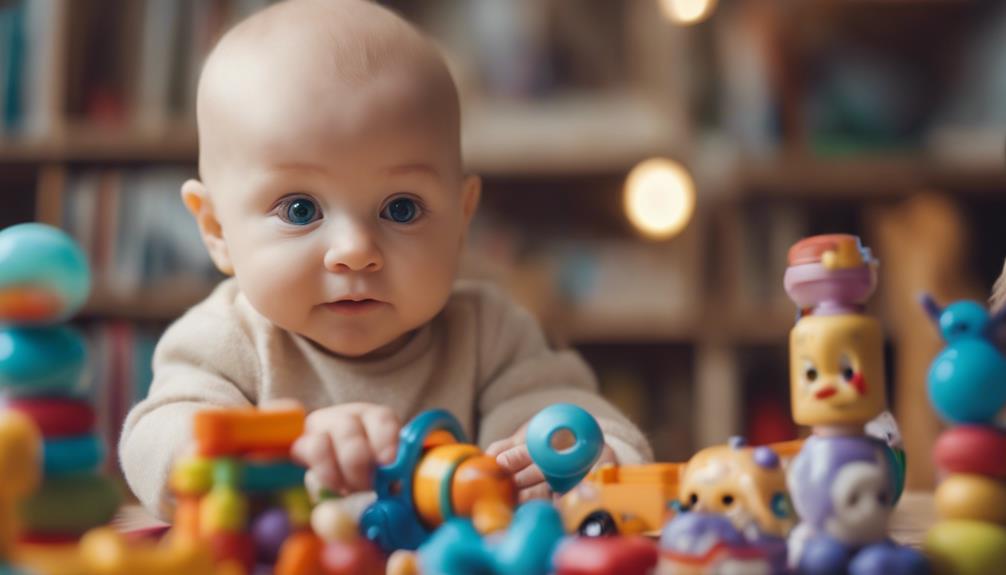
How can you identify early signs of intelligence in your baby through their developmental milestones? Watching out for specific behaviors and achievements can give you valuable insights into your child's intellectual potential.
Here are three key indicators to look for:
- Early Achievement of Developmental Milestones: Babies who reach milestones like sitting up, waving, and grasping objects earlier than expected may display signs of advanced development and intelligence.
- High Curiosity Levels and Quick Learning: Infants who show a strong desire to explore their surroundings and rapidly pick up new skills often exhibit high levels of intelligence.
- Strong Communication Skills: Babies with good memory retention, strong verbal abilities, and early language development could be demonstrating signs of intelligence.
Curiosity and Exploration
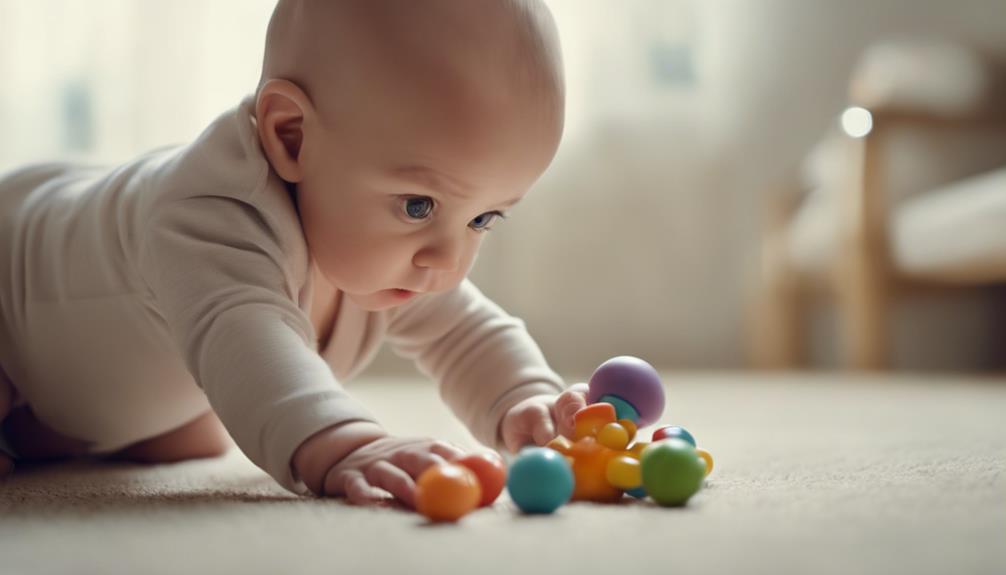
A high level of curiosity is a key trait observed in intelligent babies, driving them to actively explore their surroundings and seek out new information. Smart babies exhibit a strong desire to understand the world around them, engaging in activities that stimulate their cognitive development. Their insatiable thirst for exploration and discovery leads to enhanced learning and problem-solving skills. If your baby displays a keen interest in learning new things, asking questions, and examining objects, these could be signs of their intelligence at work.
| Curiosity and Exploration in Smart Babies | |||
|---|---|---|---|
| Traits | Activities | Benefits | Signs of Intelligence |
| Inquisitive nature | Exploring toys | Enhanced cognitive development | Asking questions |
| Enthusiasm for learning | Investigating objects | Improved problem-solving skills | Examining objects |
| Desire for discovery | Seeking out new experiences | Enhanced learning abilities | Keen interest in new things |
Encourage this curiosity by providing a stimulating environment filled with opportunities for exploration. Your baby's inquisitiveness is a powerful tool for their growth and development.
Problem-Solving Abilities
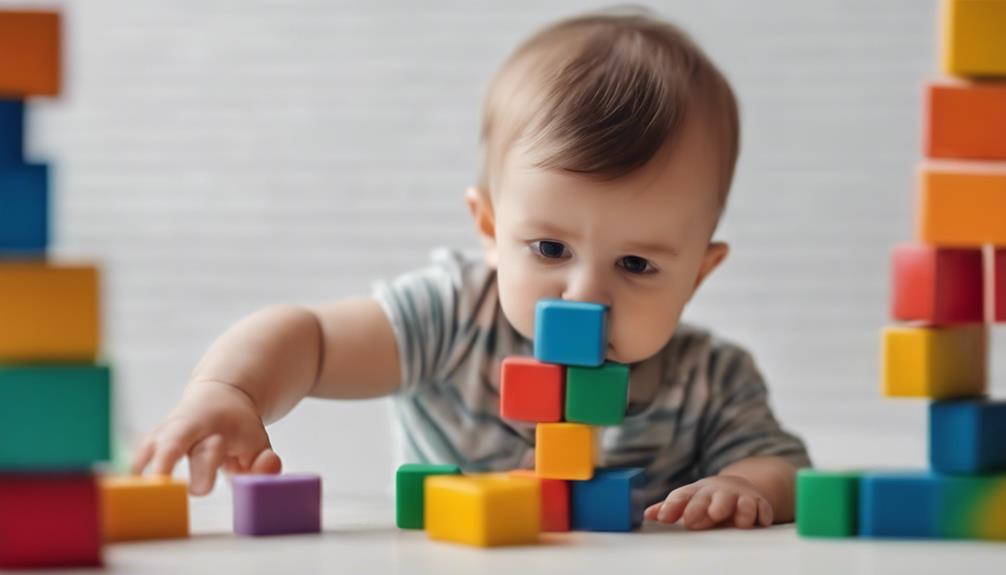
To understand if your baby is smart, observe their problem-solving abilities closely. Notice how quickly they solve puzzles, how innovatively they play with toys, and how adaptively they complete tasks. These skills can be early indicators of high intelligence in babies, showcasing their potential for advanced cognitive development.
Keep encouraging and challenging your little one to foster their problem-solving skills further.
Quick Puzzle Solving
If your baby quickly solves puzzles, it may indicate advanced problem-solving abilities. This early mastery of puzzles can be a strong sign of intelligence and analytical skills in your little one.
Here are a few key insights to help you understand the significance of quick puzzle solving:
- Early mastery of puzzles suggests advanced problem-solving abilities.
- Quick puzzle solving may be a sign of higher cognitive development in your baby.
- Babies who excel at puzzles could be displaying early signs of intelligence and analytical skills.
Innovative Toy Play
Observing how babies approach and interact with toys can offer valuable insights into their problem-solving skills, especially in the context of innovative toy play. Gifted babies often exhibit advanced problem-solving abilities through their toy interaction, showcasing a remarkable knack for figuring out puzzles and challenges beyond their age group.
When observing your baby, look for signs of creative solutions and persistence when faced with new toys or tasks. These traits indicate a high level of cognitive development and problem-solving skills.
Encourage play with toys that require problem-solving to further nurture your baby's abilities. Providing opportunities for innovative toy play not only entertains but also stimulates their mind, fostering growth in their problem-solving capabilities.
Adaptive Task Completion
Assess your baby's problem-solving abilities by observing how they adapt to and complete tasks. When evaluating your baby's intelligence in problem-solving, look for these key signs:
- Figuring out hidden toys: Watch how your baby searches for and retrieves toys placed out of sight. This ability can indicate advanced problem-solving skills.
- Navigating obstacles: Observe how your baby overcomes physical barriers or challenges in their environment. This shows early problem-solving skills and cognitive flexibility.
- Approaching new tasks: Pay attention to how your baby tackles unfamiliar activities or toys. Their ability to adapt and learn quickly can be a sign of exceptional cognitive abilities.
Memory Retention
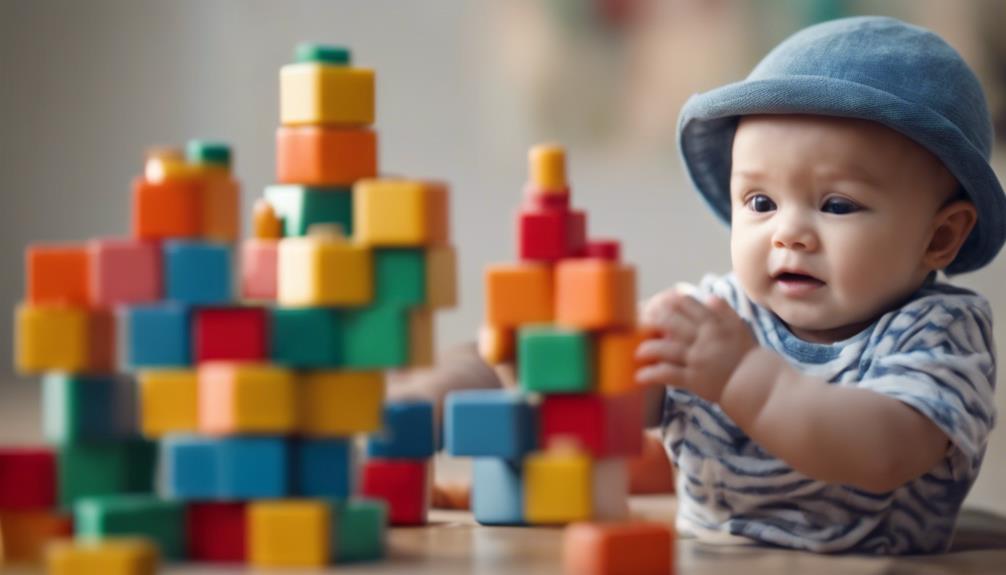
Advanced memory skills in gifted babies often manifest as exceptional retention of information and experiences from a very young age. These babies can recall details, events, and information with remarkable accuracy, showcasing their heightened cognitive abilities. Their ability to remember faces, words, and experiences goes well beyond what is typical for their age, indicating early signs of intellectual potential and capacity for learning. Gifted babies may exhibit strong memory retention in various areas, including language development, problem-solving tasks, and visual recognition.
| Memory Retention in Gifted Babies | Areas of Strong Memory Retention | Significance |
|---|---|---|
| Exceptional recall abilities | Language development | Early indicator of intellectual potential |
| Detailed memory of events | Problem-solving tasks | Capacity for learning and cognitive development |
| Clear recollection of information | Visual recognition | Heightened cognitive abilities |
Understanding and nurturing these advanced memory skills in your baby can help support their cognitive development and overall growth. Encourage memory-building activities and provide a stimulating environment to help them flourish.
Strong Focus
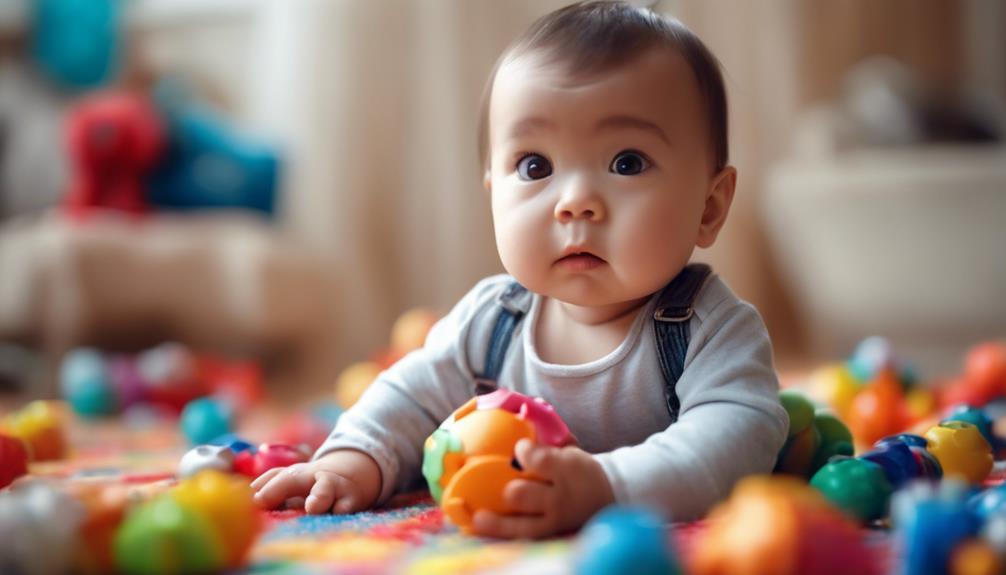
Smart babies often demonstrate exceptional focus, indicating advanced cognitive abilities from a young age. To recognize if your baby is displaying signs of high intelligence, observe their ability to concentrate for longer periods. Here are some key points to take into account when evaluating your baby's focus:
- Extended periods of engagement in tasks without distractions can be a sign of exceptional focus in smart babies.
- Encouraging play with toys like blocks and puzzles can stimulate focus and cognitive development in infants.
- Colorful floor puzzles are an excellent way to help maintain and strengthen a baby's focus, especially in those displaying advanced cognitive abilities.
Language Development
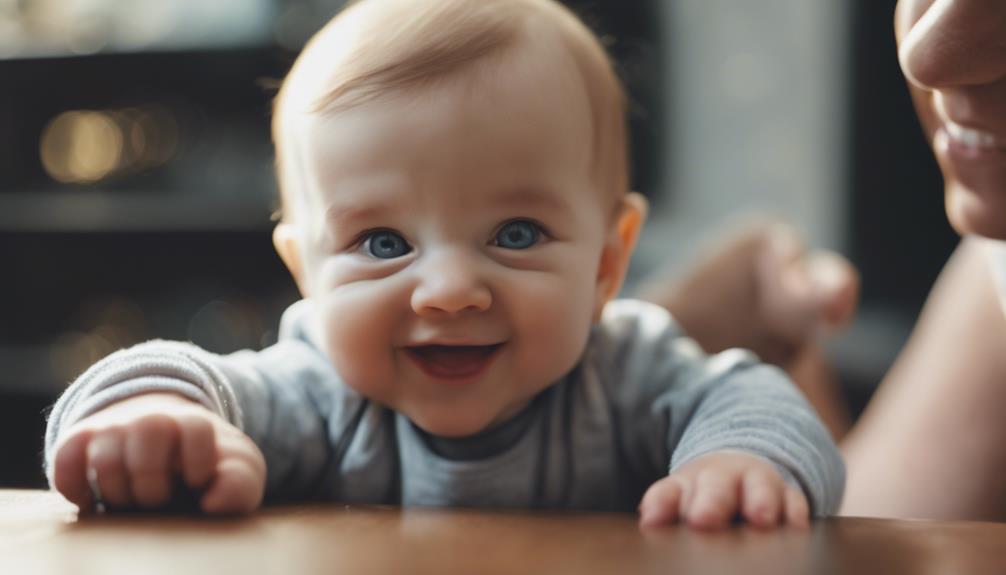
To gauge your baby's intelligence early on, observe their language development milestones as they can provide valuable insights into their cognitive abilities. Early indicators of intelligence in babies often revolve around their language skills. If your little one shows a keen interest in words, books, and starts following verbal directions, these could be signs of advanced communication abilities.
Keep an eye out for them vocalizing early and forming sentences, as these are strong indications of language development. Moreover, babies who ask complex questions and demonstrate a good grasp of forming sentences may be showing signs of high intelligence. Pay attention to their memory retention too; exceptional memory skills paired with a good understanding of language can be early signs of cognitive abilities.
Encourage your baby's language development by engaging in conversations, reading together, and giving them the opportunity to ask questions. These simple activities can go a long way in nurturing your baby's intelligence through language.
Frequently Asked Questions
How Do I Know if My Baby Is Gifted or Just Smart?
You can tell if your baby is gifted or just smart by observing their problem-solving skills, quick learning, and strong communication abilities. Look for signs of exceptional memory, high curiosity, and advanced exploration skills.
How to Check Baby IQ Level?
To check your baby's IQ level, observe problem-solving skills, curiosity, focus, stubbornness, and determination. Remember, IQ tests are inaccurate before age 4. Avoid odd practices. Trust the signs and give your little one time to shine.
What Determines How Smart a Baby Is?
Your baby's intelligence is influenced by genetic factors, environmental stimulation, brain development, cognitive abilities, early experiences, language skills, problem-solving capabilities, memory retention, social interactions, emotional intelligence, and motor skills. Providing a nurturing environment fosters intellectual growth.
How Do I Know if My 20 Month Old Is Advanced?
Pay attention to your 20-month-old's developmental milestones, focus, problem-solving skills, preference for solitude, curiosity, and birth weight. These factors can indicate advanced development. Keep observing and engaging with your child to support their growth.
Conclusion
So, if your baby is exhibiting these signs, congratulations! You've got a little genius on your hands. Keep nurturing their skills and encouraging their development.
Who knows, maybe one day they'll be the next Einstein or Mozart. Just remember, even if they're not showing all these signs yet, every child develops at their own pace.
Keep supporting and loving them, and they'll shine in their own unique way. The future is bright for your little one!

